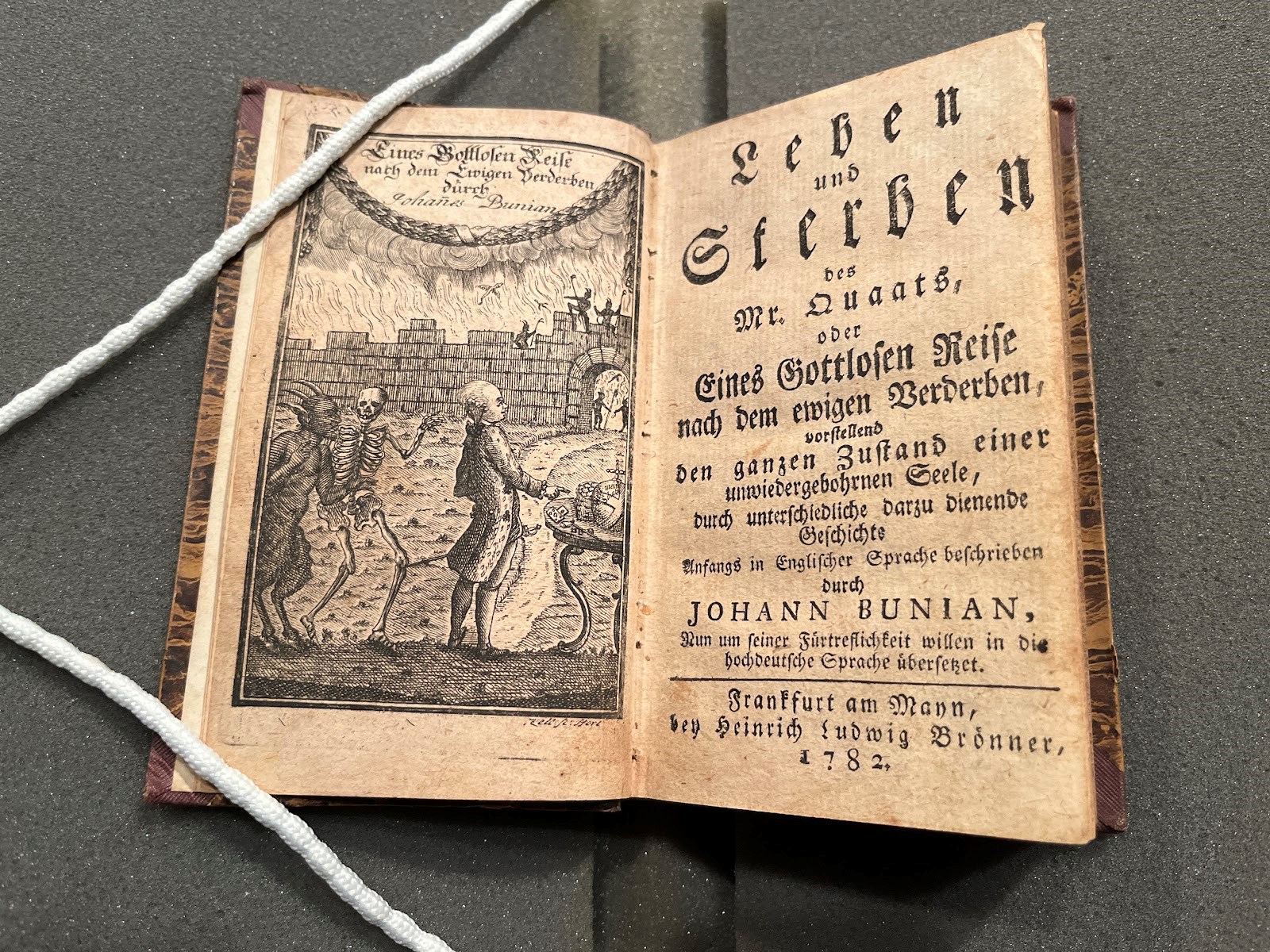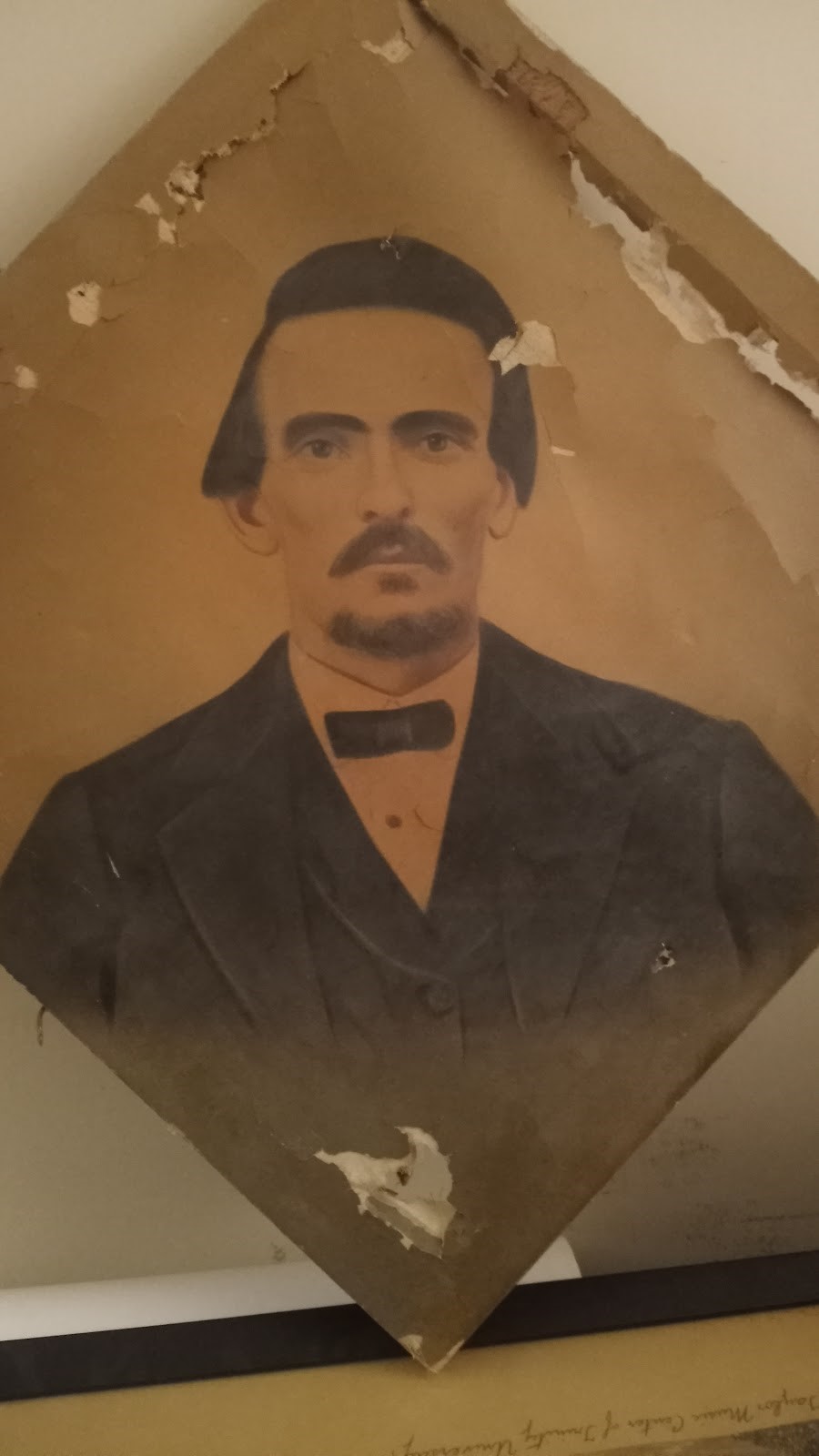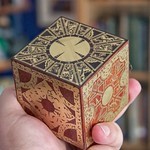
Abra Schnur, University Archivist
Fall is my favorite time of year. Some might think it’s because I can finally look seasonably dressed in my black outfits and purple lipstick. But no! It’s because October is American Archives Month!
As our campus has been reanimated, the Special Collections and Archives unit of the Coates Library has been pleasantly surprised by the number of people stopping by the second floor’s reading room. To some, it is a retreat from the bustle. Others are simply curious (it’s incredible what a propped open door can do). Some have heard about this cool space from the archives student group, and others come because they have been instructed to. As of yet, I don’t think we’ve scared anyone away.
In the spirit of the season for outreach and advocacy for the profession, I wanted to share some of the more ghostly undertakings (others might call it invisible labor) that go on behind the reading room of Special Collections and Archives.
Instruction Preparation

Colleen came across quite a spooky depiction when searching for material for a class: Call number linked.
Special Collections Librarian Colleen Hoelscher’s schedule is full of classes that are utilizing archival materials for inspiration and their research projects. Preparing for a class is almost like preparing for a seance. For a seance, you need a lot of candles, dark drapes, a medium, a set of questions for the spirit, and perhaps a pendulum or spirit board. But no two seances are the same. Classes usually have a topic, but the majority require very tailored preparations. It’s up to Colleen to research and find relevant material in our collections. Usually, it involves pulling material from various collections to create webs of information. Like Hansel and Gretel, we must keep a good trail of where things were pulled from. If not, we’re sure to end up in the oven. Hours are devoted to recreating the archival experience for students. For some classes, Colleen likes to conjure up archives kits, where she creates artificial collections of the material pulled for students to practice how they would go about doing archival research. She also develops questions to get students excited and thinking about the material they’re handling. There is certainly magic in the air when this engagement happens.
Digitization and Description Creation
Archives Assistant Rebeka Delgado has been developing a subject file system and index and creating a digital collection of material from the Learning About Learning Education Foundation. She is also taking the lead on how best to organize (and what software to use) our databases of information. Student Assistant Henry has been on a long-term project of scanning documents for our digitized publications collections. To make them searchable, he needs to review the scans, send them through a character recognition process, and ensure consistent file naming. Archivists figure out how best to present descriptive information to staff and users. Much like the Lament Configuration puzzle box of Hellraiser, it might take several attempts to get it right. But instead of opening a demonic realm, we are transcended to a world of useful digital information and collections. It’s a great place to be!
Processing Collections

How would you like to unsuspectingly come across this guy? This drawing was found within the walls of our Waxahachie campus.
A key responsibility for someone in my role as an archivist is to process records and collections to make them available for public use. At its most basic level, this requires the assessment and rehousing of material and the creation of an inventory. There is always a bit of fear when opening a box of unprocessed materials. What will we find? Twelve copies of the same item? A plastic binder that is off-gassing and deteriorating its holdings? A severed head?*
Ever, who is also a Student Assistant, and I often become transfixed by the sheer amount of paper records we are processing and the questions that arise as we go through the material.
Why were things previously arranged this way? Do we need to keep this arrangement? Wait, why did the arrangement change? When did this come here? Whose papers are these? Why is this folder titled this way? Is this the same department as that other box? Why is this material in here? What information is on this floppy disk? Who are these people in these photographs?
WHAT DOES IT ALL MEAN???
These are basic questions that often do not have answers. The entrancement of the unknown is enough for you to question your sanity.
As University Archivist I am processing the Board of Trustees Records and the Faculty Senate Records. Ever is working on processing the Student Government Association Records. This will be the University Archives’ seminal work in regard to the operational records of the institution for years to come. Processing these collections are necessary to be good stewards of the institutional record. But how do I get others to regard this work as such? Is it as easy as casting a spell? Not quite. But the work that archival staff does in the shadows of the reading room is worthy of appreciation on several fronts.
From an operational standpoint, maintaining institutional records is just good business practice. It helps with succession planning, the accreditation process, and the risk management of records. From a historical perspective, archives serve as a means of evidence that events did occur. It’s also necessary for the archives to expand beyond “official” records and care for other material that provides a broader understanding of how Trinity shaped its students and alumni, faculty and staff, and the regional communities it shares a home with.
I realize that no matter the amount of outreach we do, there will always be a bit of archival mystique to our unit. It’s a total vibe, and I don’t mind it. But I do strive for the campus to have a better understanding of our operations and essentially our purpose here. We’re not here just to display rare books in the library.
We are here to support teaching and research objectives.
We are here to strengthen experiential learning opportunities.
We are here for the preservation of institutional knowledge and campus experiences.
This is my new incantation.
*Footnote: Traumatic and/or emotionally upsetting materials can appear in the most unexpected places. While I make light of what can be found in an archival box, the truth is secondary trauma is a real occupational hazard that many archivists, oral history practitioners, and memory workers experience.
